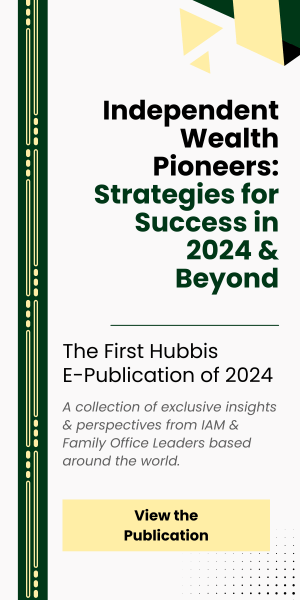EY Partner Mark Wightman on Digital Transformation in a Challenging Global Environment

Mark Wightman of EY
Aug 12, 2022
Mark Wightman, Asia-Pacific Wealth and Asset Management Consulting Leader at EY, has a bird’s eye view of the evolution of the wealth management industry in Asia, including advances in digitisation, and key priorities for the private banking sector. For some years, he has also been a regular speaker and expert thought leadership panellist at Hubbis’ public and private events. He sat as one of our panel of experts on the June 30 Hubbis Digital Dialogue event that focused on the next generation of digital tools and solutions for Asia’s wealth industry. He told delegates how upgraded digital platforms are increasingly essential for survival, how digital must be employed for cost savings in an industry suffering from cost pressures and very importantly for delivery of a client-centric wealth model. Technology, he said, drives the beating heart of the wealth management business, and is essential for differentiation and also often for survival. He explained how most banks and firm have very different goals for their digitisation journeys, some focusing on the wealthiest segments of clients, some more on the entire wealth continuum as they move clients through retail to mass affluent and then on to become private bank customers. We have summarised some of his insights in this short report.
Wightman opened his commentary by reviewing what banks and wealth managers are focusing on most energetically in terms of their ongoing digital transformations. “I could take the full hour to cover this one, but will try to be brief,” he quipped.
The beating heart…
Technology, he said, drives the beating heart of the wealth management business. “When we talk in particular about the spend on digitalisation in recent years, most banks and firm have very different goals,” he observed. “Some may be focusing on the wealthier clients, some on the whole wealth continuum as they move clients through retail to mass affluent and then on to become private bank customers. But overall, we can see that a large slice of spend is around the customer experience, enhancing how they interact with the clients, and to achieve that they have been boosting the toolset for the RMs and advisors to drive productivity.”
As a result of this focus, there is a battle for the right talent to expedite plans. “Some banks and firms have put themselves ahead as they are perceived as offering the best environment for the RMs to deliver their best to their clients,” he added.
All-encompassing digitisation
He said that these tools are helping deliver the right approach and interaction, right from the onboarding and KYC phases and through to suitability, relevance, personalisation and optimised investment and other solutions for these clients.
“Digital spans the whole sector, helping boost processes, helping de-risk the banks, enhance the customer experience, improve the RM’s capabilities and engagement, and so forth,” he stated.
Wightman observed that over the last 9 months the investment environment had changed very significantly from the decade-plus long rising tide of indices and asset valuations since the nadir of the global financial crisis, and firms must adapt given the choppy markets.
A more challenging environment
“This is naturally changing how the wealth industry approaches and aims to monetise their clients,” he commented, “and in an environment where everyone has been chasing talent and driving up salaries, the industry needs to stop and think if there is real value to be obtained if they are paying key people another 20% or more. Moreover, the assets do not move with the RMs so much as they used to given the regulatory environment and the onboarding complexities, all of which remain highly challenging, despite all the digital advances of recent years.” Clients may not want the hassle and is this really in the client’s best interests?
He noted that there had been some shift toward discretionary portfolio management to boost revenue predictability and do what’s right for clients, but the wealth industry is facing a bigger challenge as the world of investments enters a new and more difficult phase. “We have seen more DPM, and the industry has shifted towards ESG-centric investments and more private and alternative assets, as well as dabbling in digital assets,” he reported. “Looking ahead, clients generally need more CIO type perspectives, more expert guidance and advice, and more help with challenges around portfolio construction, liquidity and so forth. Clients need a good reason to invest & remain invested in these difficult markets”
A balanced, hybrid model
Wightman also referred to the need to balance digital and human excellence. He pointed to a very recent EY report in conjunction with Oxford University. He said the report talks about transformations and the difficulties around those, finding that 67% of those C-suite experts surveyed had been involved in at least one underperforming transformation over the last five years. “That is actually a rather shocking statistic,” he commented, “so we all need to get a lot better at this.”
Moreover, he added that the world faces a more challenging economic, financial and investment landscape ahead, meaning that getting these transformations right is even more vital than in benign environment.
Wightman also offered some observations on the speed of transformation and the evolution of the wealth market and offering, noting that the business environment in the APAC markets will likely lead to some consolidation via M&A as people reassess their businesses, the segments in which they compete, and their range of products and services. “The landscape is changing and will become more interesting,” he said, “and we are certainly keeping an eye on these types of developments.”
He drew his observations towards a close with some notes of optimism. He said while 2022 to date has been challenging in many ways for revenues and investments, net interest margins (NIMs) for the banks and financial institutions are going up as interest rates rise. “On the digital transformation side, clients are clearly looking very carefully through a value lens, and on the business side, banks we speak to are slowing their hiring, trying not to drive costs ever further higher,” he said. “And just as the pandemic drove further digital transformation, we anticipate this slow down will also encourage more of the same, but with an ever-sharper eye on costs and value, and a clear mission to align human and digital capabilities. People and technology are the key to getting this right.”

Asia-Pacific Wealth & Asset Management Consulting Leader at EY

More from Mark Wightman, EY
Wealth Solutions & Wealth Planning
Delivering Effective, Relevant and Accessible Communication in Wealth Management
Latest Articles






